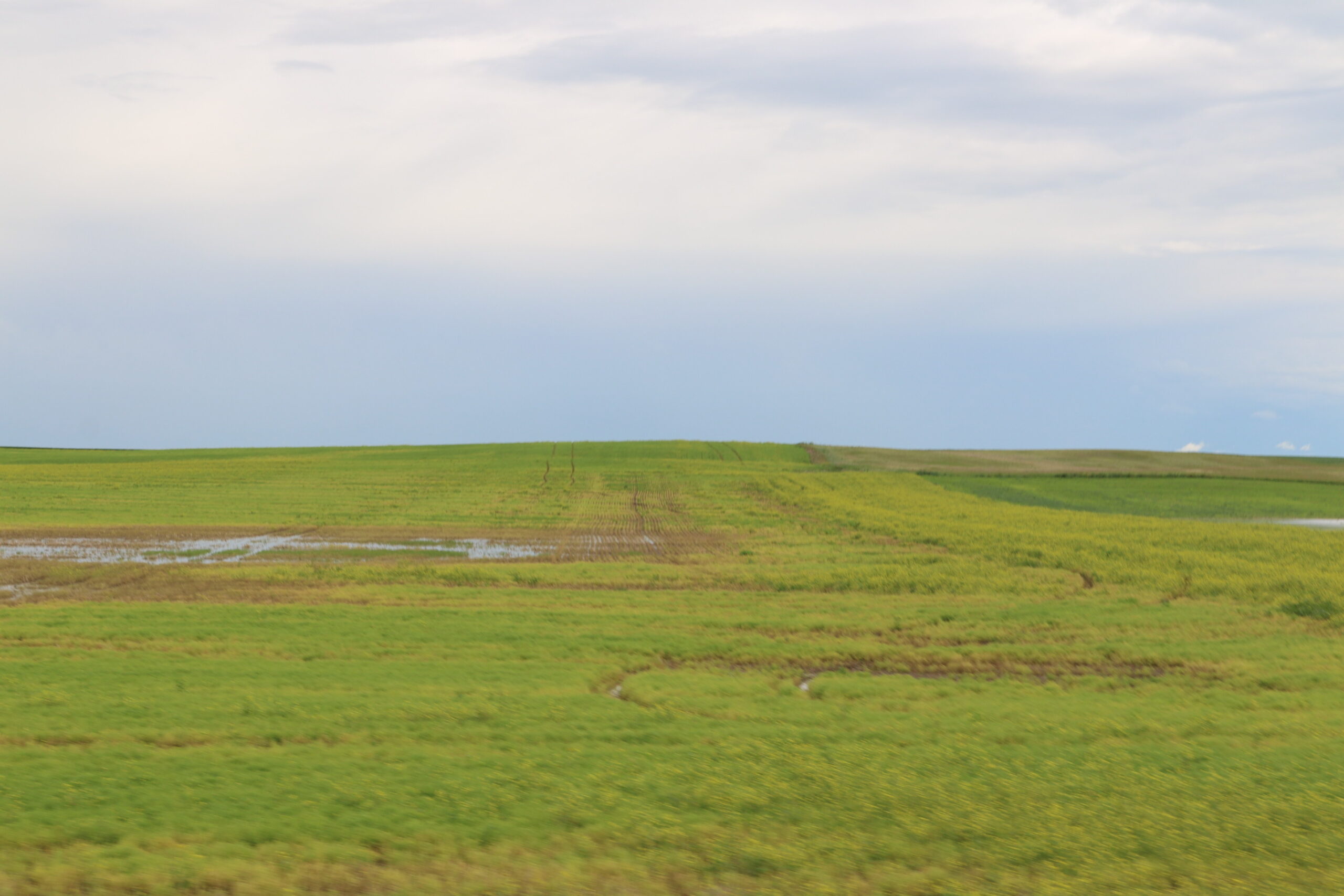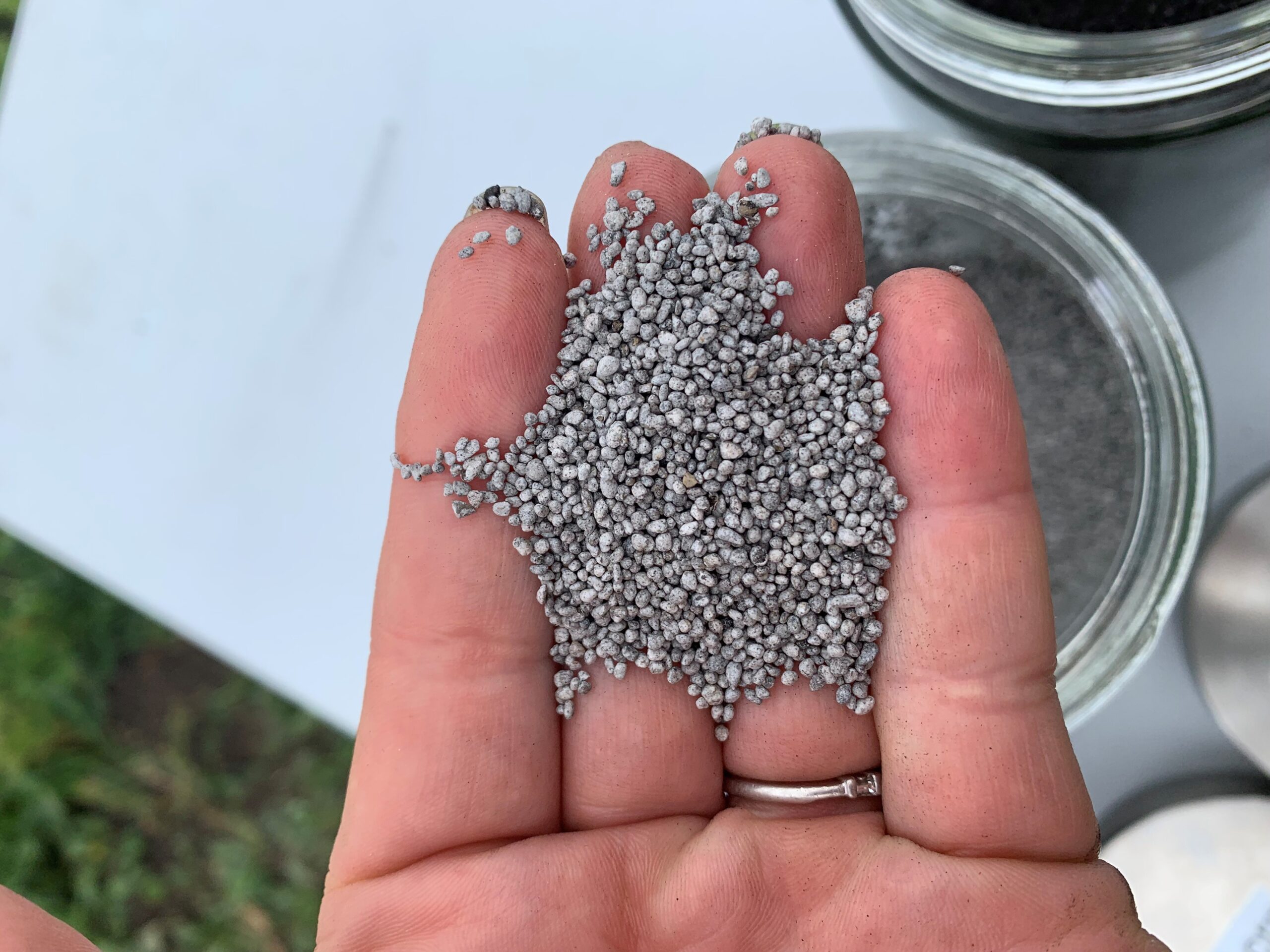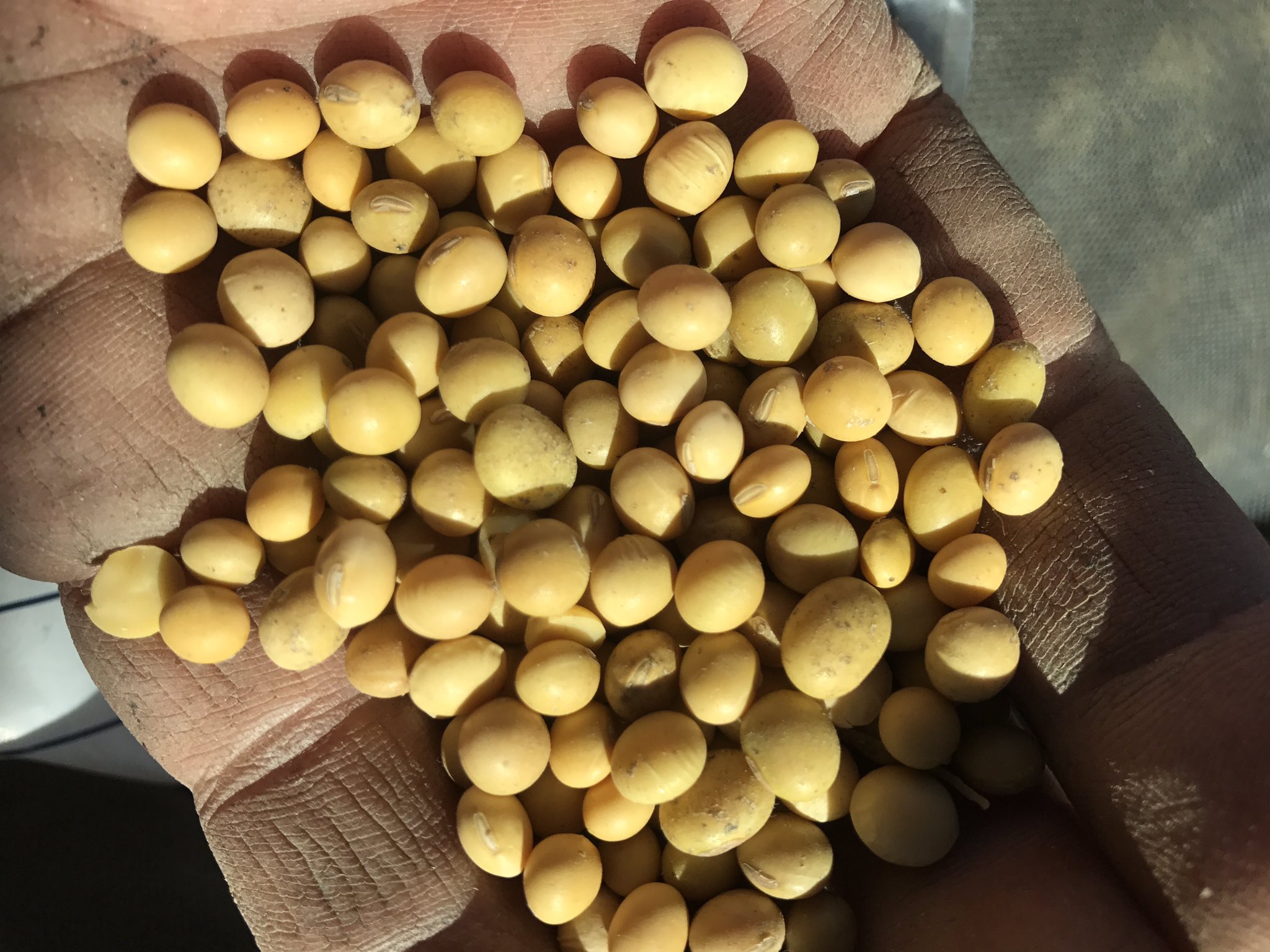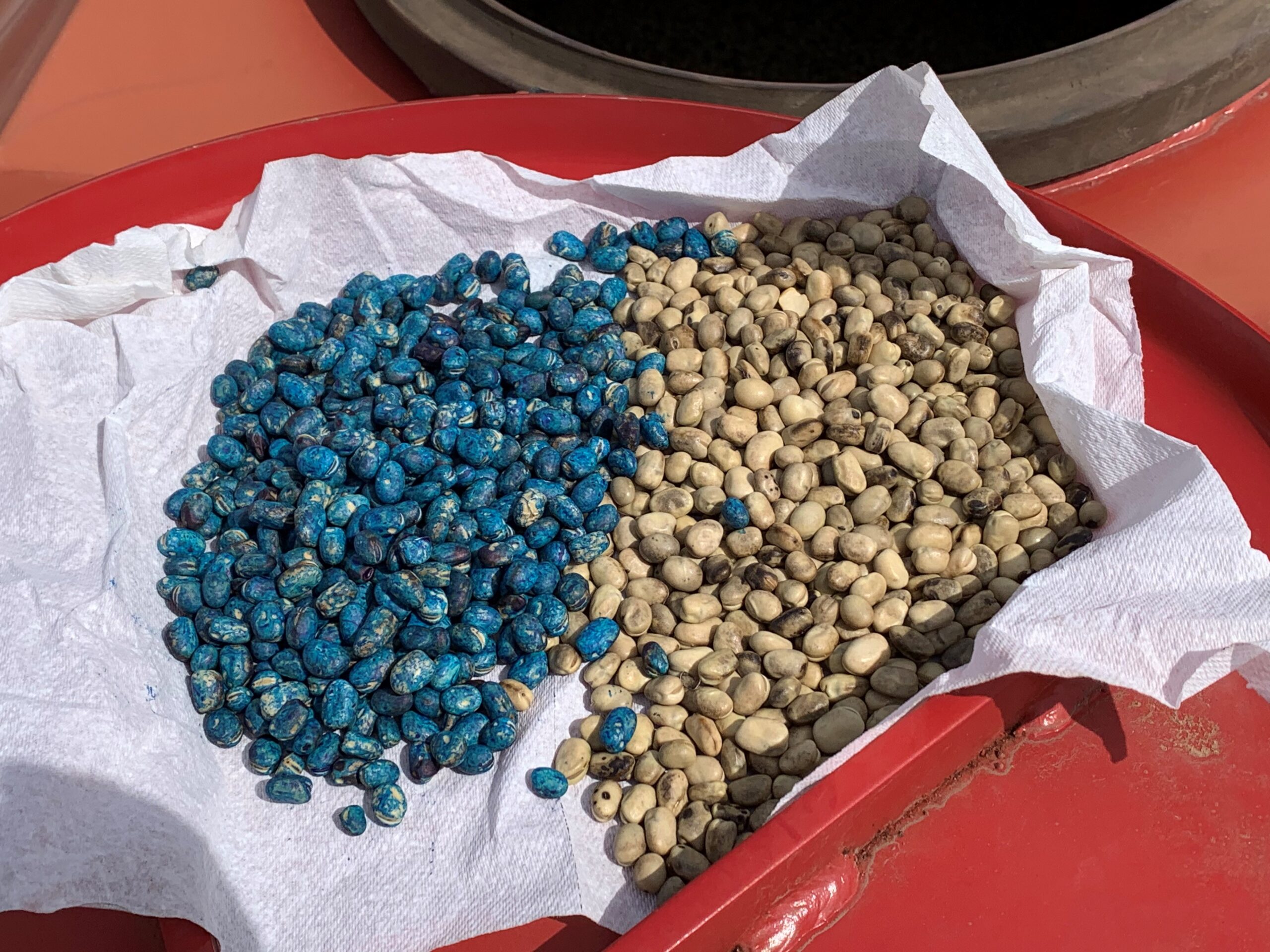Abiotic stresses caused by environmental conditions can damage, or even kill, pulse crops. Heat, frost, wind, drought, and hail can all cause physiological issues. When pulse crops are injured at the seedling stage, their recovery depends on the stage of development of the crop as well as where the growing points are for recovery and regrowth.
Peas, lentils, chickpeas, and faba beans undergo hypogeal germination, where the cotyledons and growing points remain below the soil surface protected from adverse conditions. The first two growing points or nodes on these crops do not produce true leaves but are called scale leaves. Scale leaves are often underground during early growth. The first two nodes, as well as the growing point at the seed, provide points for possible re-growth, should the plant sustain above-ground injury from conditions such as frost, heat canker, wind damage, or defoliation. Regrowth from these lower nodes will mean delayed maturity on those plants affected.
Soybeans and dry beans have epigeal germination, where the cotyledons and growing points push up through the ground and are the first above-ground structures. All growing points are above-ground which makes the plants less likely to recover from environmental stresses that severely damage the crop.
Waterlogging and drought often trigger survival mode with premature ripening and poor yields. Hail, wind, and frost damage can lead to delays in maturity which increases the risk of exposure to fall frost.
Heat Canker
Heat canker is caused by high soil surface temperatures and most commonly develops on black, tilled soil before canopy closure in late May and early June. These soils can reach 50°C or higher on hot, sunny days. Lentils are the most commonly affected pulse crop.
The base of the stem near the soil line may pinch off and the seedlings turn yellow and die. Heat canker can be distinguished from seedling blight and root rot by digging up the roots. Pulse roots affected by heat canker may remain healthy, as opposed to a rotted root caused by seedling blight.
The amount of heat canker in a field is usually low. Regrowth can occur from nodes below the soil surface or at the seed if the crop was not too advanced and environmental conditions favour regrowth. Shading provided by stubble in no-till fields and seeding in a north- south direction may offer some protection against heat canker.
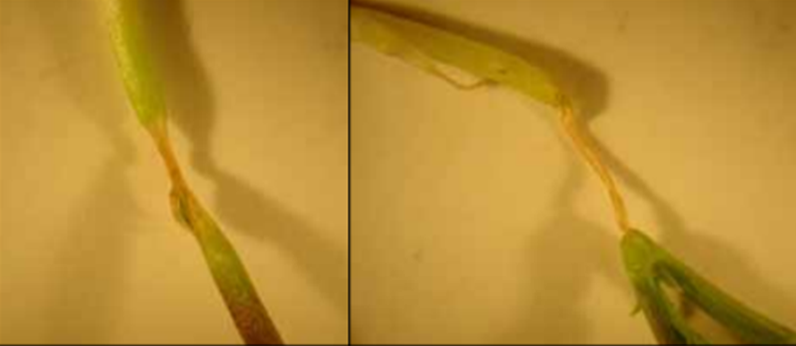
Source: Saskatchewan Ministry of Agriculture Crop Protection Laboratory
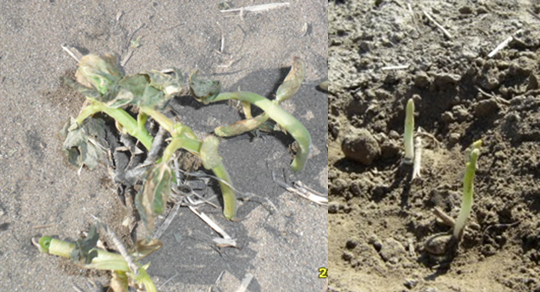
Source: Saskatchewan Crop Insurance Corporation
Wind Damage
Under dry conditions and light textured soils, wind can sandblast seedlings causing injury to the stem. Plant stems may break or be completely cut off. Damage can be greater on hilltops and side slopes facing the wind.
No-till seeding will minimize wind-blown soil erosion that causes sandblasting. Assess the entire field to determine if plant stands are adequate and whether reseeding is necessary. Plants cut off at the soil surface may regrow from below-ground nodes in some pulse crops. However, delays in maturity are expected.
Hail Damage
Hail damage and recovery is stage and crop dependent. Early-season hail damage to peas, lentils, faba beans, and chickpeas has an impact similar to frost damage. The plants will continue to develop from dormant buds within one or two weeks, so reseeding assessment should be delayed to see how the crop recovers.
Hail damage to the growing points of soybeans and dry beans in early stages will severely limit recovery. However, soybeans in the vegetative stage can tolerate a fair amount of leaf loss without significant yield loss.
As the crop stage advances the impact on yield can be more pronounced. After flowering, leaf loss or damage to the stem can significantly influence yield potential. Damage to the stem may not be significant enough to directly affect yield but it can leave the plant more susceptible to lodging in the fall, which can increase harvest losses.
Hail damage to the pod can result in poor seed set and seed development if the damage is along the vein feeding the pod or seed. Damage to pods can also create openings for pathogens to enter which can destroy the pod and seed inside or reduce quality.
Hail simulation research at the University of Saskatchewan on lentils found a 28% yield reduction at the vegetative stage, 37% yield reduction at the early flowering stage, and 45% reduction at pod-fill and physiological maturity stages. Damage is also correlated to the level of hail damage. Seed in pods may be bruised by hail, indicated by brown bruises on the seed.
Hail and rain provides moisture and usually aggravates Ascochyta disease severity in chickpeas, as well as foliar diseases in other pulse crops. Wounds from hail can be sites for infection by plant pathogens. Fungicide applications following a hail event are important for protecting a salvageable crop.
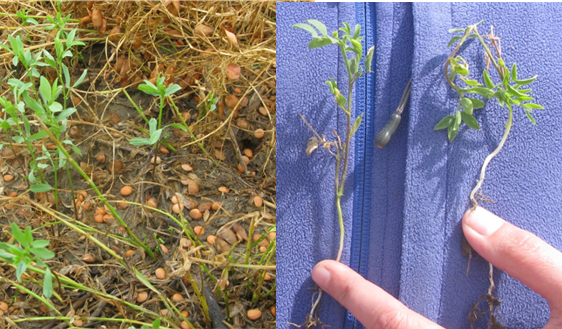
Source: Saskatchewan Crop Insurance Corporation
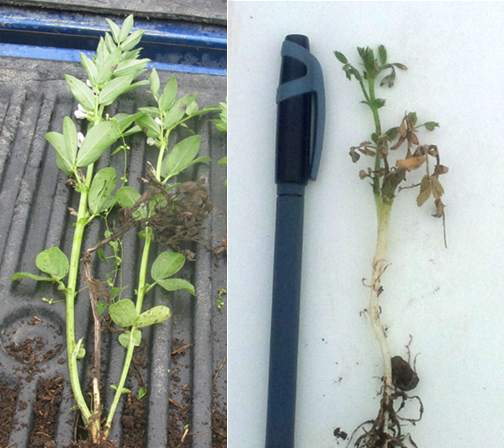
Source: Saskatchewan Crop Insurance Corporation

hail damage (centre and right)
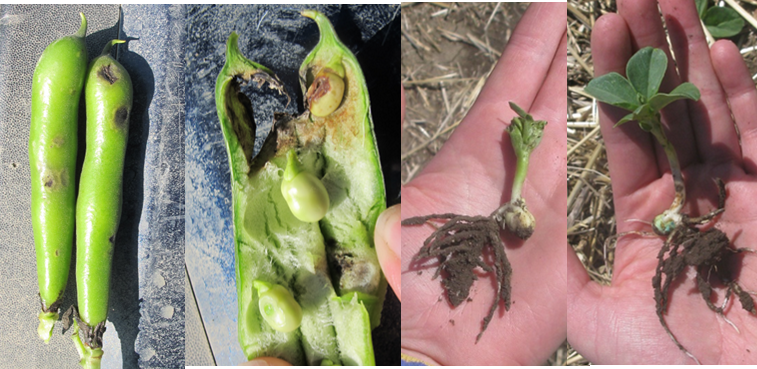
outside pods and infected pod and seed inside (left). Faba bean seedlings (right) showing
hail damaged and undamaged.
Source: Saskatchewan Crop Insurance Corporation
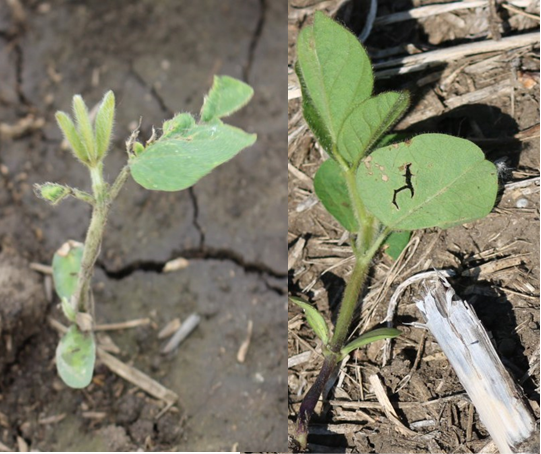
to seedling but new growth of first trifoliate (left),
and light damage on leaves from hail (right).
Bald Head
Baldhead in dry beans is caused by mechanically damaged seed and is more severe on navy than pinto beans. The seedlings do not have a growing point, and the cotyledons may or may not be attached to the stem and are often broken off. A few weak stems may develop from the axils of the cotyledons. Prevention is the only management option and includes buying good quality seed with high germination, moistening the seed before augering into the drill, and handling the seed gently during seeding.

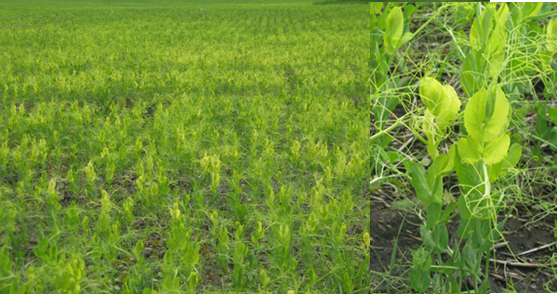
Source: Saskatchewan Crop Insurance Corporation
Waterlogging
Peas and lentils are very sensitive to waterlogging. With saturated soils there is a lack of oxygen in the root zone that can result in reduced nitrogen fixation and yellowing of the plant. The root’s ability to absorb other nutrients may also be hindered and signs of nutrient stress can start to show up. Excess water can result in poor growth, decreased leaf area, and a yellowing of the plants.
Leaves may dry up and die prematurely, flowers may drop off, and there may be a reduction in the number of developing pods.
Drought Stress
Dry conditions can stress the plants and reduce plant growth. If the dry conditions occur during reproductive phases, the yield potential can be greatly reduced. Limited water can result in slowed growth and shortened internodes. Plants can become stunted and enter into reproductive phases prematurely as the plant’s survival mechanisms kick in to try to produce at least one seed. Drought in the very early vegetative stages may cause shorter plants but if moisture conditions improve as the reproductive phase begins, then the yield potential is less impacted. Reproductive stages (flowering, pod development, and seed set) are more impacted by moisture stress than vegetative stages.
Nodulation and nitrogen fixation can also be impacted by drought stress. Rooting patterns can impact the tolerance of pulse crops to dry conditions. Chickpeas are relatively drought tolerant because their long tap root can access water to at least one metre deep. However, flowering, pod formation, and seed set are sensitive to drought stress at these stages.
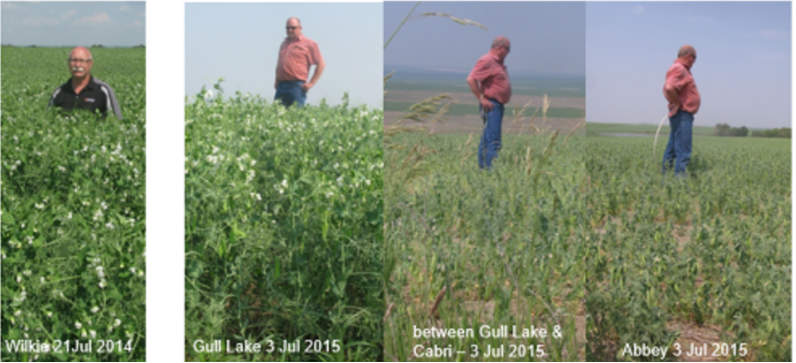
Source: Saskatchewan Crop Insurance Corporation

Heat Damage
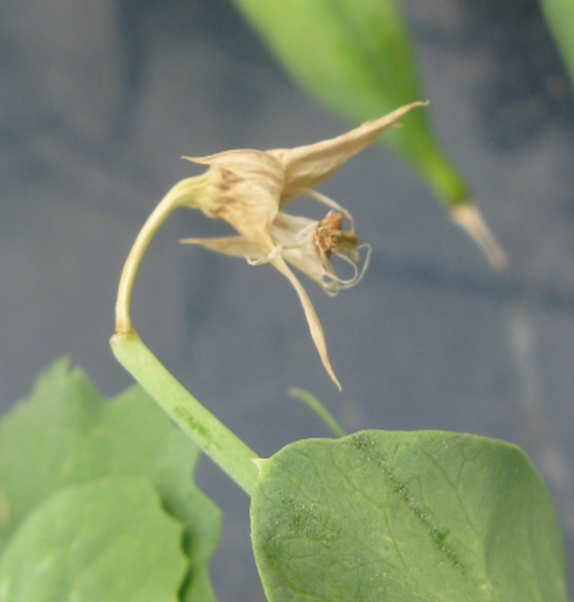
Source: Saskatchewan Crop Insurance Corporation
Hot temperatures during flowering may cause plants to abort flowers, resulting in lower pod set.
Soybeans and dry beans are susceptible to sunburn (sunscald) during hot July and August days.
Soybean leaves develop red rectangular spots on the upper and lower leaves of the plant. The plants have a brownish, rusty appearance on the exposed leaves. Unexposed leaves will remain healthy.
Dry beans are similarly affected with small brown patches appearing between the veins on plant leaves. These patches may expand leaving large patches of dead tissue between the green veins.
Frost
The impact of a spring frost on pulse crops varies by species. Refer to the Spring Frost Damage to Pulses article published in May 2019 that covers crop tolerances and how pulse crops recover.
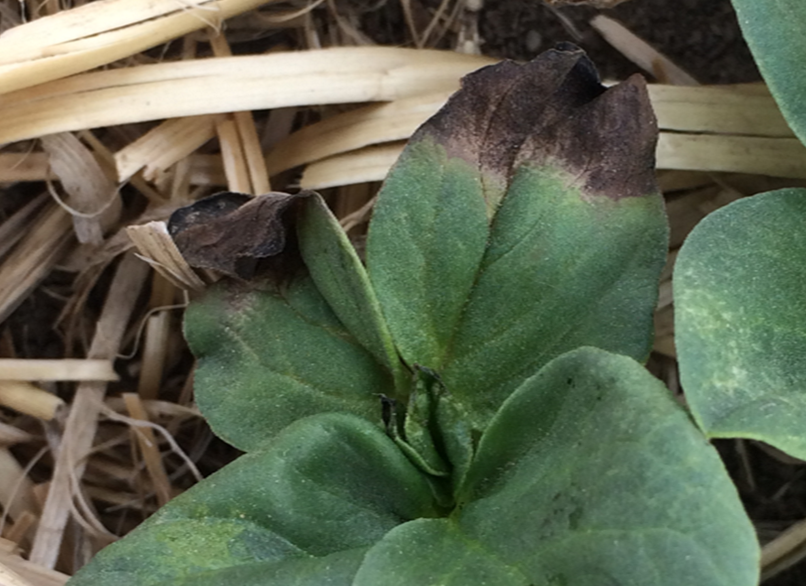
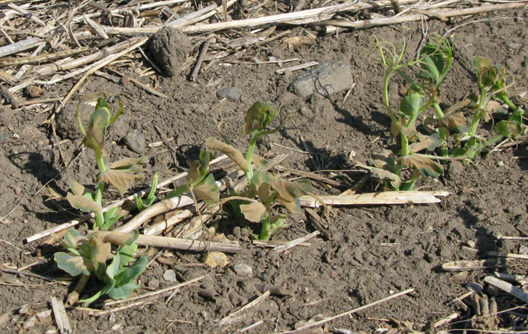
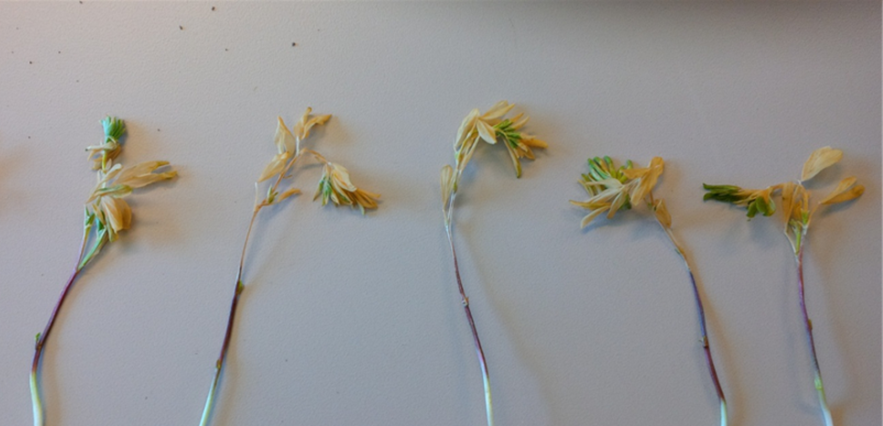
Source: Saskatchewan Crop Insurance Corporation
Tips For Evaluating Environmental Damage
- Peas, lentils, chickpeas, and faba beans have growing points lower on the plant and at the seed that allow these crops to recover from above-ground damage.
- Soybeans and dry beans do not have the ability to recover if above-ground growing points are severely damaged.
- Give the plants time to recover — it may take up to a week for regrowth to be seen.
- Consider damaged tissue as susceptible to infection by pathogens. If the crop is salvageable, apply fungicide to help protect the crop.
